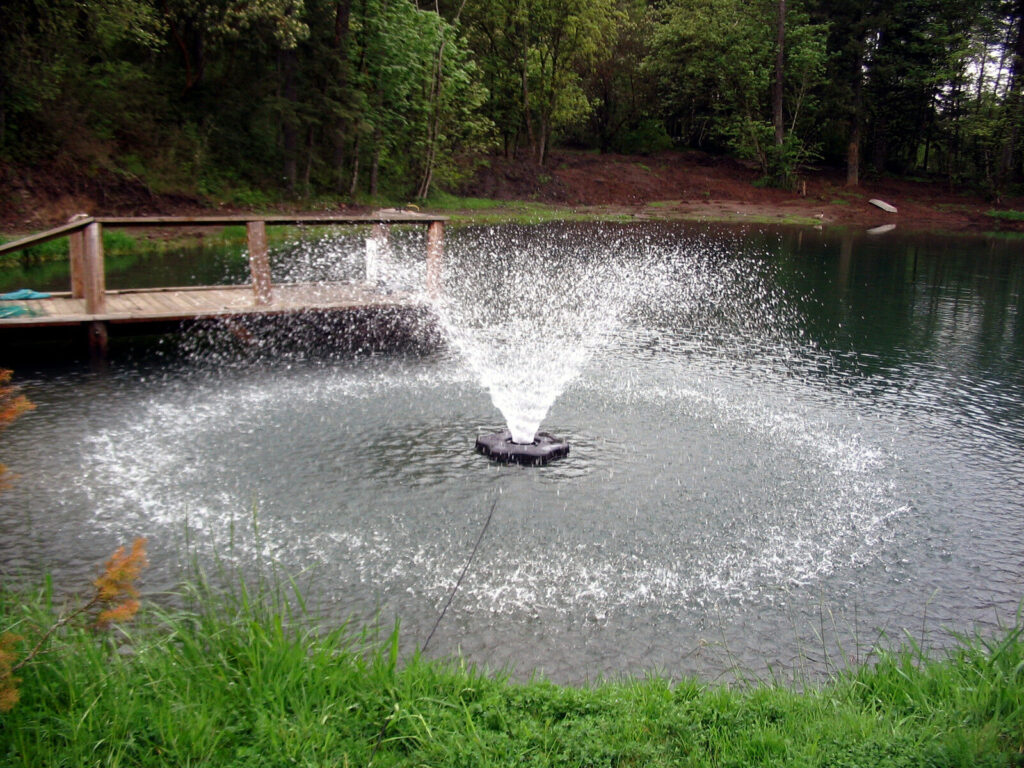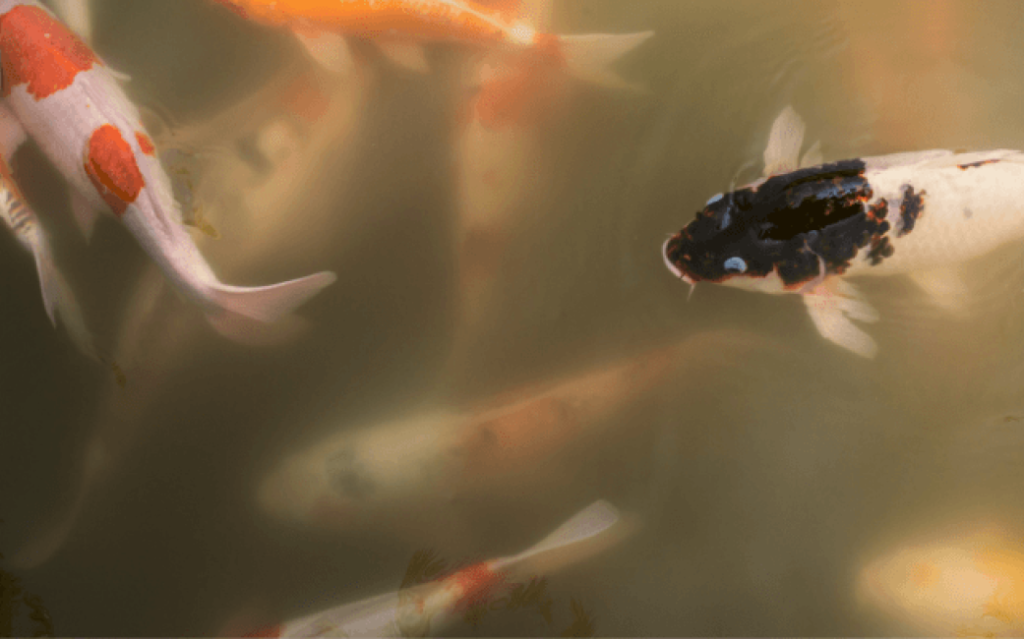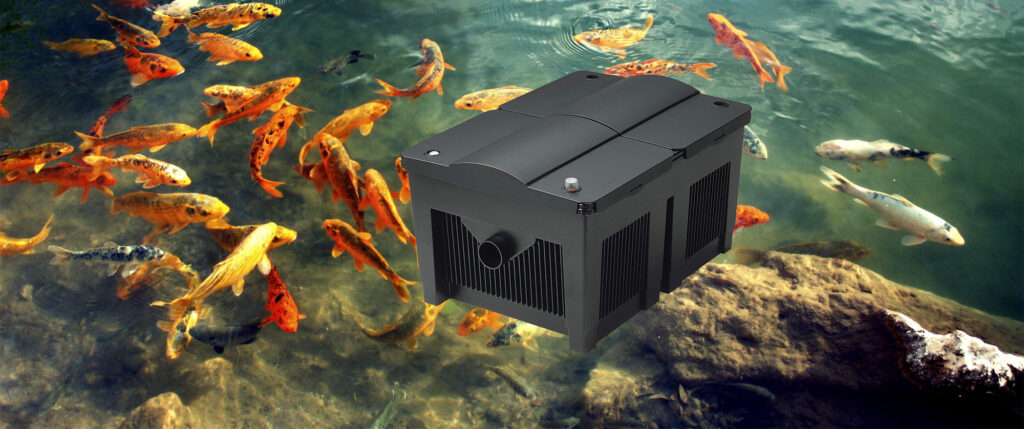
Pond mosquito control is a tricky topic seeing as though you are advised to let the eco-system in the area develop on its own. However, with mosquitoes, you don’t have such a luxury. You either eliminate them early, or they could cause you more problems later on.
If you’re already dealing with the issue or a new pond owner, the information below should help you kill most of the mosquitoes in the pond as well as keep their population down. After that, sipping a beer at the pond’s edge in the evening or staying in the nearby house won’t be as problematic. However, most of these are measures that need to be applied continually; otherwise, the mosquitoes will be back in full swing before you know it.
Notably, we didn’t just single out mosquitoes out of the entire pond eco-system for elimination without reason. One major one is they can be uncomfortable to have around. They enjoy taking bites out of human beings while simultaneously sucking their blood. This is painful, and the itchy welts left behind can last for days.
Also, mosquitoes are disease-carrying pests. You could come down with any number of diseases once one has bitten you. The diseases in question include malaria, which is the most common, Zika virus, dengue fever, West Nile virus, yellow fever, dog heartworm, and more.
By reducing the mosquitoes in the pond, you minimize the chances of contracting any of the diseases mentioned above when you visit the pond. Also, some of you have built ponds right next to your housing units. This makes it easy for the present mosquitoes to reach you, especially as you sleep.
An extremely annoying aspect of mosquitoes is how they buzz around close to your ears as if they’re taunting you just before they take a bite. However, the reasons for learning how to keep mosquitoes out of your pond also extend into pond care.
These creatures leave their waste products in your pond as well. As such, they directly contribute to sludge and harmful substances in the water. Notably, this will make your pond cleaning exercises more hectic. However, if you get rid of mosquitoes and mosquito larvae in the ponds early enough, you avoid these side effects.
Mosquitoes are probably going to be in and around your pond all year round. However, it starts being a problem when they are allowed to breed and become too many. When they are fewer, it’s not much of a problem as birds, fish, frogs, and other life forms in the pond eco-system will feast on them. However, when their population is high, they can disrupt your enjoyment of the pond.
Notably, some environmental conditions will encourage mosquitoes to multiply. One example is that they lay eggs on slow-moving or stagnant water. By their design, most ponds feature stagnant water unless the owner decides to do something about it.
Also, if there are other sources of stagnant water in the area, the mosquitoes may be using them as a breeding ground before moving into your pond. Of course, if they can find food and procreate in the area, there is no reason to move away. If this accurately describes your pond, you may be looking at a mosquito problem in the near future.
Also, there may not be enough natural mosquito predators such as birds, frogs, and bats in and around your pond to deter their population from growing.
Nevertheless, there are steps to take to make the pond uninhabitable for mosquitoes. If you follow them, the mosquito population will dwindle to the point of almost dying out. That said, if you were to let your guard down just because you don’t see them anymore, it wouldn’t take long to get their numbers back up.
Worth noting is that you may not see many mosquitoes in the winter if temperatures in the area get really low. This is because the larvae and eggs go into diapause Trusted Source Diapause - Wikipedia In animal dormancy, diapause is the delay in development in response to regularly and recurring periods of adverse environmental conditions. It is a physiological state with very specific initiating and inhibiting conditions. The mechanism is a means of surviving predictable, unfavorable environmental conditions, such as temperature extremes, drought, or reduced food availability. Diapause is observed in all the life stages of arthropods, especially insects. Embryonic diapause, a somewhat similar phenomenon, occurs in over 130 species of mammals, possibly even in humans, and in the embryos of many of the oviparous species of fish in the order Cyprinodontiformes. en.wikipedia.org , where they are essentially dormant until the weather improves.
Like most other bugs, the mosquito life cycle consists of four stages between the start of their life and death. They start as eggs, where as we stated before, they are laid onto stagnant water by the adult female mosquitoes.
The water provides a conducive environment for the eggs to develop, and in a one to three-day period, they hatch. What comes out of the eggs are larvae that will have to molt several times before they can exit this stage.
While they are still larvae, these baby mosquitoes need to feed, which is where fungi, bacteria, and algae in the water come in. The larvae can dive into the water for short periods to get their meals. However, they often come up for air. Also, the larvae can take between four and fourteen days to mature, at which point they will move to the pupa stage of their development.
Notably, mosquitoes in the pupa stage don’t need to feed. The longest a mosquito pupa can last is four days, after which it transforms into a fully grown adult.
A fun fact is that female mosquitoes need to mate only once with their male counterparts for as long as they live. They store the sperm inside them after that, and the only other thing they need to develop their eggs is your blood.
Another fun fact is that males don’t feed on human blood. Since females lay eggs in the multiples, it doesn’t take long until all you see are mosquitoes in the area around your pond.
Since you have all this data about their habits and how they procreate, the steps below can hinder their development. Consequently, you won’t have many mosquitoes fresh from their pupa stage heading straight for the exposed part of your ankle to take a bite.
Start by maintaining your pond. Notably, you are more likely to find stagnant pockets of water in unmaintained ponds. One example of this is where there are lots of water lilies on the pond surface which we know to be weeds. While weeds do float on water, there are bound to be pockets of moisture on top of them as well. Even if the rest of the pond has fast-flowing water, these small pockets can still provide a place for the female mosquitoes to lay their eggs.
Second, unmaintained ponds are more likely to have malfunctioning equipment such as pumps and filters. This directly translates into less water movement over time. Filters, for instance, can get clogged depending on how long the filter media has been in use. The mosquitoes will happily lay their eggs here, and there is ready food in terms of the bacteria colonies. However, if you regularly clean and service your pond equipment, the risk of this happening is low.
Some of the equipment also encourage the movement of water. The filters and pumps we mentioned above are examples. Notably, when a mosquito exits the pupa stage, it has to stay on the water surface to dry its wings. This process should take a few minutes. However, if the water is flowing, the creature will be dragged under the water surface, drown and die. Consequently, it won’t get the chance to be a nuisance in your compound.
Skimmers, on the other hand, remove fallen leaves from the water surface that would be ideal as a stagnant water egg-laying location for mosquitoes. Another side effect of poor pond maintenance is poor water quality. Of course, fish and other pond animals don’t thrive in such conditions. Consequently, you miss out on a natural pond mosquito control product as these creatures eat mosquitoes.
The way pond aerators work is they continuously feed and circulate oxygen in the pond. They take this air from outside the water, through their tubes, and into the bottom of the pond. Here the air is released in the form of air bubbles. Even as some of the air dissolves, most of it will rise through the water and exit the pond.
This process is repeated over and over, and this leads to waves and water motion. As we’ve already established, the mosquitoes won’t be able to lay their eggs in such an environment. Floating weeds as well cannot thrive in a well-aerated pond. Consequently, you prevent mosquitoes from laying eggs on the pockets of moisture that settle on these weeds.
Lastly, free-floating algae is an easy source of nutrition for the larvae that you eliminate by aerating the pond. After all, even these pond residents prefer it if the water surface is still. Also, just getting an aerator is not enough if it doesn’t cover the full size of the pond, which is why you should be careful with your purchases.
Notably, the KoiAir2 has been recommended and re-recommended by previous users and pond owners for people whose ponds are 4 feet deep or less. Additionally, it aerates ponds with a capacity of 16,000 gallons and below.
When the mosquito population is already high, and you need a fast-acting solution, bacteria insecticides will perform exceptionally well. They are safe for the fish and other life forms in the pond eco-system since they are organic.
The way that bacterial insecticides work is that they are sprinkled on the water surface. The bacteria are then released into the water, and they consequently release toxins that affect insect larvae. Notably, the number of insects and their larvae that these toxins affect is limited and includes black flies, gnats, and mosquitoes.
These bacterial insecticides are perfectly safe for the fish inside the pond, unlike their chemical counterparts. They also don’t affect the plants and other animals in the pond. Also, how fast or slow these products work depends on the type you pick. Notably, there are only two main types of bacterial insecticides.
The two variations include mosquito dunks and mosquito bits. The bits are the faster-acting variation of the bacterial insecticides and will make light work of mosquito larvae in a 24-hour period. Conversely, the mosquito dunks are much slower.
The Summit Mosquito Bits seem quite reliable for the job if what reviewers are saying is true. Even the parts of these bits that are not bacteria are organic and disintegrate into the water over time. Also, the product is EPA certified, which might assure users that it is safe.
Besides the usual aeration, there are other ways to eliminate the mosquito larvae food source, which is algae. Algaecides are one example, but we don’t really recommend them since the chemicals can affect other pond life forms, e.g., the fish.
Water dyes are another excellent way to eliminate algae as they deprive them of the sunlight they need to grow and develop. A side effect of water dyes is they may kill other pond plants, and that is something you want to avoid even as you try to keep mosquitoes out of your pond.
Skimmers and pond nets can also lift algae out of the water. However, pond nets seem ineffective when dealing with larger ponds. Lastly, the most preferred algae control method and one we would wholly recommend is UV clarifiers.
The fact that UV clarifiers work continuously is also ideal. If you have enough of them set up in your pond, you never have to worry about there being enough algae to feed the mosquito larvae. Notably, the way they work is remarkably similar to filters in a lot of ways. Water goes in on one end with certain impurities, in this case, the algae, then comes out the other end pure.
They will need to be taken out of the water periodically for maintenance purposes. After all, they are machines and are just as susceptible to damage and breakage as other mechanical pond care products.
Also, you have probably been advised about letting the fish in your pond source food for themselves. Fortunately, they like eating insects, and mosquitoes and larvae are sources of nutrition for them. There are mosquito fish whose main diet consists of mosquito larvae. However, other types of pond fish also enjoy eating a mosquito or two. Examples include rosy reds, guppies, minnows, and more.
These fish can snatch the mosquitoes right from the surface of the water as they are laying eggs. Also, if they succeed in laying their eggs, the young ones won’t live long enough to become full-grown mosquitoes that need blood.
Notably, mosquito-eating fish populations increase and decrease in direct proportionality to the mosquito population. They increase when there are many mosquitoes since there is enough food to support them and decrease when the food is scarce.
Additionally, mosquito-eating fish rarely affect the rest of the fish in the pond, and this can create the ideal eco-system for all useful pond life to thrive.
Besides fish, other animals also view mosquitoes as a food source. Frogs, birds, and bats are a few examples. This makes your next course of action easier to figure out.
For bats, there are bat houses that you can buy on Amazon that serve to attract these creatures to your back yard. Of course, if you’re successful, the bats will fly around at night, taking out the mosquitoes by eating them. However, don’t expect the bat house to fill up right away. It could take months to start seeing the first few guests in the bat house.
Also, a bird sanctuary in the area around the pond may take care of your mosquito problem during the day. There are several proven methods to attract birds which include bird feeders, setting up nesting areas, planting bird-friendly plants, and even providing drinking water. Notably, as you’re providing drinking water, be careful you don’t end up unwittingly creating a mosquito breeding ground.
Lastly, figure out how you can get frogs and toads into the area around your pond.
The vegetation surrounding your pond also provides a convenient hiding spot for those pesky mosquitoes. After all, these are just the moist plant conditions in which some mosquitoes thrive. If you trim down the vegetation in the area, the mosquitoes have fewer places to hide and find a dwelling.
Also, the birds and bats we mentioned above will have an easier time getting to them if there is nowhere to hide. Of course, the trimming should be done regularly if it will be effective as a pond mosquito control method.
Pond mosquito control is necessary if you want to avoid being bitten every time you visit your water structure. This can go a long way in making your home livable if the pond is relatively close. Also, don’t forget that you avoid some diseases caused and transmitted by mosquitoes by ensuring their population stays low. Lastly, avoid letting up on these pond treatment measures for mosquito control as the bugs are persistent and will be back before you know it.





